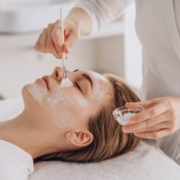Exploring the Potential of Plant-Derived Exosomes in Biotechnology
Exosomes are small, naturally occurring extracellular vesicles that play a vital role in cell-to-cell communication. These nanostructures, typically ranging from 30 to 150 nanometers in diameter, are secreted by various cell types, including those from plants. They carry a variety of biological cargo such as proteins, lipids, and RNA. This unique ability to transport molecular information makes exosomes valuable tools across multiple domains, including biomedical research, drug delivery, and even agriculture.
In recent years, plant-derived exosomes have gained considerable attention due to their potential as a sustainable alternative to animal-derived counterparts. Unlike traditional methods that rely heavily on mammalian cell cultures, plant exosomes are generally more biocompatible and less likely to trigger immune responses in humans. The growing interest in plant-based exosomes is largely driven by their natural composition, scalability, and low toxicity, positioning them as a promising frontier in the development of new therapeutic and technological applications. As research advances, it becomes increasingly clear that plant-derived exosomes could play a transformative role in the future of biotechnology.
What Are Plant-Derived Exosomes?
Plant-derived exosomes, also known as plant extracellular vesicles (P-EVs), are nanoscale vesicles naturally secreted by plant cells. These vesicles transport diverse molecular cargo, including proteins, lipids, and RNA (such as miRNA and mRNA). One of the most remarkable characteristics of plant exosomes is their ability to cross biological barriers and interact with human cells, making them highly suitable for biotechnological and medical applications.
While structurally and functionally similar to mammalian exosomes, plant exosomes tend to be less immunogenic and more biocompatible. They can also be sourced from widely available, renewable plant materials, offering an eco-friendly and sustainable alternative to animal-derived exosomes. Moreover, their capacity to deliver bioactive molecules enhances their potential in drug delivery, gene therapy, and skincare applications.
How Are Exosomes Isolated from Plants?
Isolating exosomes from plants involves specialized techniques designed to preserve their purity and functionality. The most common method is ultracentrifugation, which separates exosomes based on size and density by spinning samples at speeds up to 100,000 × g.
In addition to ultracentrifugation, methods such as size-exclusion chromatography (SEC) and polymer-based precipitation are also used to further purify exosome preparations. These techniques help eliminate contaminants such as proteins and free lipids that could compromise downstream applications.
One challenge in isolating plant exosomes lies in maintaining their structural stability during extraction, as the biochemical composition of plant tissues can vary. However, recent advancements in isolation protocols have significantly improved the yield and quality of plant-derived exosomes, enhancing their suitability for use in medicine, skincare, and agriculture.
Potential Applications of Plant-Derived Exosomes
Due to their biocompatibility, stability, and bioactivity, plant-derived exosomes hold promise in several sectors, including:
Biomedical Research and Drug Delivery
In the field of biomedicine, plant-derived exosomes have been studied for their ability to deliver therapeutic agents, such as RNA, proteins, and small molecules, to target cells. These exosomes are particularly promising for drug delivery because of their ability to cross biological barriers, such as the blood-brain barrier, and target specific tissues. For example, exosomes from ginger have been shown to reduce inflammation and oxidative stress, offering potential for the treatment of chronic diseases like arthritis and cardiovascular conditions.
Moreover, plant exosomes can be engineered to enhance their targeting capabilities. This could potentially open up new avenues for gene therapy and personalized medicine, where exosomes are used to deliver therapeutic genes to specific cells in the body.
Cosmetic and Skincare Applications
In cosmetics, plant-derived exosomes are gaining traction for their regenerative and anti-aging effects. Their nanoscale size allows them to penetrate the skin and deliver active ingredients that improve hydration, elasticity, and skin tone. For instance, aloe vera-derived exosomes exhibit soothing and moisturizing properties, making them ideal for inclusion in skin care products like creams and serums.
Agricultural and Environmental Applications
In agriculture, plant exosomes are being researched for their ability to protect crops and enhance plant health. They can deliver RNA molecules that silence genes in pests or pathogens through RNA interference (RNAi), offering a natural, sustainable alternative to chemical pesticides. This approach may revolutionize integrated pest management strategies.
Key Advantages of Plant-Derived Exosomes
Sustainability and Eco-friendliness
One of the primary advantages of plant-derived exosomes is their sustainability. Unlike animal-derived exosomes, which often require complex and expensive animal cell cultures, plant exosomes can be sourced from abundant and renewable plant materials. This makes them a more eco-friendly option, as the production of plant-based exosomes relies on agricultural resources that are often less resource-intensive compared to animal farming or lab-based animal cell cultures.
Biocompatibility and Safety
Plant-derived exosomes are known for their biocompatibility. Because they are derived from natural plant sources, they are generally less likely to trigger immune responses when used in human therapies or cosmetics. This makes them a safer option for various therapeutic applications, such as drug delivery and gene therapy, where immune reactions can pose significant challenges. The natural composition of plant exosomes also reduces the likelihood of toxicity, making them suitable for a wide range of uses in medicine, cosmetics, and agriculture.
Scalability
Another significant advantage of plant exosomes is their scalability. Plant materials are abundant and can be cultivated on a large scale, making the production of plant-derived exosomes more feasible for commercial and industrial applications. This scalability is especially important for applications like drug delivery or agricultural pest management, where large quantities of exosomes are required. Plant exosomes provide an accessible and cost-effective alternative to animal-based exosomes, which are often more expensive to produce.
The Future of Plant-Derived Exosomes
Advancements in Isolation and Engineering Techniques
Ongoing improvements in isolation technologies and exosome engineering are expected to enhance the specificity and effectiveness of plant exosome applications. Techniques such as surface functionalization and targeted cargo loading could significantly improve therapeutic outcomes in drug delivery and gene therapy.
Expansion of Sustainable Biotechnology
The push towards sustainable biotechnology is one of the key drivers for the increasing interest in plant exosomes. As environmental concerns continue to shape the global agenda, plant-based solutions that are renewable and biodegradable are becoming more attractive. Plant exosomes offer a sustainable alternative to animal-derived biomolecules, and their eco-friendly production processes could be crucial in reducing the carbon footprint of the biotechnology industry.
Potential for Personalized Medicine and Advanced Therapies
In the field of personalized medicine, plant exosomes may become a cornerstone for developing tailored therapies. With their ability to deliver genes, proteins, or small molecules to specific tissues, they could enable highly targeted and personalized treatments for a variety of conditions, from cancer to neurodegenerative diseases. Ongoing research into plant exosomes’ ability to cross biological barriers will further expand their potential in gene therapy and targeted drug delivery.
Conclusion
In conclusion, plant-derived exosomes represent an exciting frontier in biotechnology, offering sustainable, biocompatible, and scalable alternatives to traditional exosome sources. Their unique ability to carry a variety of bioactive molecules and cross biological barriers makes them promising candidates for applications in medicine, cosmetics, and agriculture. As research continues to advance, the potential of plant exosomes will undoubtedly expand, paving the way for innovative solutions to some of the most pressing challenges in healthcare, environmental sustainability, and beyond.
For those looking to explore more about plant-derived exosomes and their applications, further research and collaboration are encouraged. The future of plant exosomes is undoubtedly bright, and their role in biotechnology is poised to grow in the coming years.
If you’re interested in exploring high-quality plant-derived exosomes, Creative Biostructure offers a comprehensive range of solutions. Their advanced isolation methods and expert knowledge in exosome technology provide valuable resources for various industries, from biomedical research to skincare and agriculture. To learn more about their offerings and discover how plant exosomes can advance your projects, visit Creative Biostructure’s Exosome Page.










